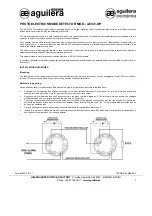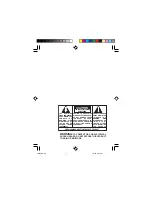
VESDA
®
Refrigerated Storage Design Guide
This closed loop system will prevent pressure differences, caused when the VESDA detector is
powered down for any length of time, from introducing warm and humid air into the refrigerated
storage area via the VESDA exhaust port. Pressure differences will also result in unwanted airflow
faults.
The return pipe from the exhaust should be as short as possible and its penetration, into the
protected area MUST be air-tight.
Important Note:
All inlet and exhaust pipes MUST be closed off whenever the system is powered
down or detectors are removed for maintenance.
5.4 Water
Traps
Water traps are not a requirement of the VESDA smoke detection system. As discussed
previously, they are only necessary under vastly varying environmental conditions where internal
sample pipe condensation is a possibility. An example of a water trap is shown below (Figure 15).
Figure 15 – Example of a water trap.
To install a water trap, a T section of pipe must be fitted to the pipe entering the inverted detector.
Water will pool at the stop valve on the downwards pointing arm of the T. The transparent section
of pipe allows maintenance personnel to see when water is building up, before it rises above the
intersection with the main sampling pipe, and release it via the stop valve. An end cap could be put
on the pipe in place of the stop valve. If no condensation is evident after some time, the water trap
can be removed.
Important Note:
Water trap stop valves and end caps MUST be replaced as soon as the water
has been drained. Leaving the pipe open will affect the airflow.
5.5
Integration With Pre-action Sprinklers
The VESDA smoke detection system can also be used to activate pre-action sprinklers, if installed.
For the purposes of pre-action sprinkler activation, VESDA protection in-rack is usually not required
even where there are in-rack sprinklers. However, it is important to refer to the FM memorandum
0805
[15]
for further details.
15








































